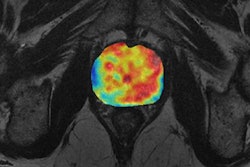
As the use of artificial intelligence (AI) in medical imaging gains pace, specific use-cases are emerging where AI-enabled image analysis tools are delivering clear clinical and/or commercial benefits. For x-ray and CT imaging, these can be broadly categorized as productivity tools. For example, algorithms that detect and classify lung nodules or breast lesions, and triage solutions that route incoming studies to the most appropriate specialist and prioritize urgent cases in the reading list based on the initial AI findings.
However, for MR imaging, the value of AI will be to accelerate the use of quantitative imaging in daily clinical practice, by automating the time-consuming and often imprecise task of manually taking measurements of imaging features. This extends from automated size measurements, such as the long and short measurements of tumors, to more advanced quantitative characterization of tumor phenotypes, including texture, position in the organ, and heterogeneity. The factors driving the move to quantitative imaging and image-based phenotyping include the following:
- Enables more informed decision-making and improved diagnostic accuracy
- Ability to compare changes and disease progression between prior and current imaging studies
- More personalized treatment planning
- Ability to predict a patient's response to treatment
By 2023, the world market for AI-enabled MRI analysis software is forecast to exceed $500 million, with brain imaging expected to be the largest subsector. While neurological imaging biomarkers have been used in research projects and clinical trials for many years, they have only recently started to gain acceptance in daily clinical practice. There is a growing interest in the use of imaging biomarkers for the diagnosis, treatment planning, and management of a variety of neurological disorders, including Alzheimer's disease, multiple sclerosis, and traumatic brain injury (TBI).
World market for AI-enabled MRI analysis software in 2023 ($ millions)
 Chart courtesy of the European Society of Radiology.
Chart courtesy of the European Society of Radiology.Beyond neurology, quantitative imaging will gradually be applied across all MRI subspecialties, with prostate imaging, MSK, and cardiovascular (e.g., noninvasive diagnosis of coronary artery disease) as some of the other key use cases. For prostate imaging, the trend to quantitative imaging will be driven by growing interest in the use of multiparametric MRI as a first-line investigation for patients with suspected prostate cancer.
Multiparametric MRI exams can be difficult and time-consuming to interpret and suffer from high interreader variability. As such, machine learning-based image analysis will play an increasingly important role, both in terms of helping radiologists cope with increasing scan volumes as multiparametric MRI becomes more widely used to detect prostate cancer and to generate the quantitative imaging data to improve diagnostic and treatment decision-making.
Barriers to market adoption
The trend to quantitative imaging is at an early stage and several market barriers need to be addressed. None of these are considered roadblocks and they are expected to be gradually overcome in the following years:
- Market awareness and education on the benefits of quantitative imaging
- Lack of reproducibility between the results obtained from different vendors' quantitative imaging software
- Integration into radiologists' workflows; quantitative imaging results need to be presented at the time of the primary read, rather than postprocessing
- Most PACS systems do not allow for the searching and mining of quantitative imaging data
Boosting the value of radiologists
 Simon Harris of Signify Research. Image courtesy of Signify.
Simon Harris of Signify Research. Image courtesy of Signify.The rapid rise of AI in medical imaging has been met with a mixture of fear, skepticism, and enthusiasm by radiologists, with the initial anxiety over job security now giving way to a general acceptance that AI will augment rather than replace radiologists. This holds particularly true for quantitative imaging, as enriching radiology reports with quantitative imaging data adds value for referring specialists, strengthening the role of radiology. In the coming years, referrals for medical imaging exams will increasingly request quantitative results rather than purely text-based reports.
Moreover, radiologists who are skilled in quantitative imaging will strengthen their role in multidisciplinary decision-making, particularly as the move to precision medicine gains pace. For private radiology practices, offering quantitative imaging will differentiate their services from their competitors, helping to retain customers and win new ones from practices who are slow to react. As radiology continues to evolve in today's era of value-based care and AI-enabled care delivery, quantitative imaging will help radiologists to remain both relevant and valued.
Simon Harris is principal analyst and managing director at Signify Research, a U.K.-based independent supplier of market intelligence and consultancy to the global healthcare technology industry.
Originally published in ECR Today on 28 February 2019.
Copyright © 2019 European Society of Radiology



















